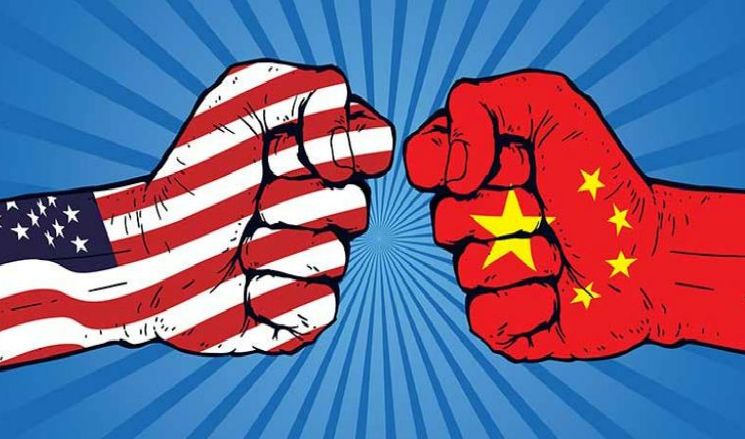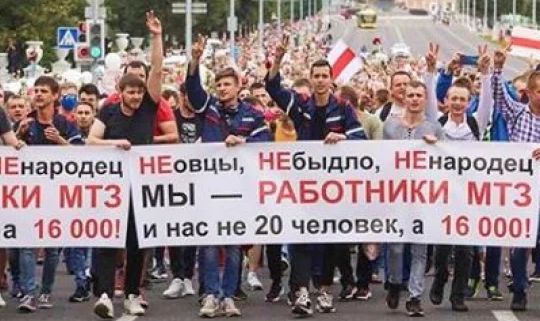Steve Score is a member of the Socialist Party (CWI in England & Wales).
 On 15 September 2018, a posh get together takes place at a secret venue in London. At it, top bankers who were part of Lehman Brothers – once the fourth largest investment bank in the world – celebrate the tenth anniversary of its 2008 collapse with “cocktails and canapes”. Its demise was a major turning point in the financial crisis that had already been brewing during 2007 but which then developed into a worldwide economic crash.
It is a crisis from which the world economy has still not fully recovered and which has fundamentally changed politics across the globe. Above all, the billions of people who have suffered huge cuts to their living standards as a result will not see a cause to celebrate!
Up until the moment Lehman Brothers collapsed, governments, bankers and economists were still repeating the mantra that unregulated free-market capitalism, with limited state intervention, is always best. But they then realised that, unless they did intervene, they risked not just a crash, but one on the scale of 1929. This event resulted in the great depression of the 1930s, with all its consequences including revolution and counter-revolution. They were forced to act.
Government intervention
These neoliberal capitalist governments u-turned. They nationalised and subsidised the banks. They pumped trillions of pounds into economies around the world. But this was not directed towards working class people. Instead it went to the banks and financial institutions. This huge intervention prevented a repeat of 1929 but was unable to stop a significant world economic downturn.
It was not socialist nationalisation of course. Instead it was more of a case of ‘socialism for the rich’, carried out with the purpose of propping up capitalism. It highlighted the weakness of capitalism. Millions of working class people lost their jobs and homes – living standards were not subsidised! Yet the bankers who precipitated the crisis were not only largely unpunished for their role, but continued to reap their multi-million pound bonuses.
It once again proved the correctness of Marxism – with sometimes even the main mouthpieces of capitalism reluctantly agreeing that Marx’s analysis of capitalism was bang up to date. Last year, the Economist magazine said “much of what Marx said seems to become more relevant by the day”. Of course, their conclusion is not to get rid of capitalism but to shore it up.
Economic crisis is built into the DNA of capitalism. Periodic booms and slumps have never been eliminated, with wholescale destruction of value, productive capacity and labour skills that are built up over time. The slumps drastically affect the lives and living standards of working class people and, at the same time, demonstrate the waste and senselessness of capitalism as a system. Capitalist economists over hundreds of years have been unable to solve this basic problem.
Boom and bust
In every economic boom, the representatives of the capitalists claim to have found the answer! Famously Gordon Brown, the New Labour prime minister at the time of the crash, had repeatedly claimed to have solved capitalism’s ills. Even in his 2007 budget speech, only months before the crisis developed, he said: “We will never return to boom and bust”.
The Socialist Party, through the pages of the Socialist and Socialism Today, had long before then analysed the processes that would lead to an inevitable crash. It was not a matter of if – it was a matter of when. This assertion was not made in the crude manner of some who claim a catastrophic crisis is around the corner every year, but on the basis of a sober analysis of economic factors.
The immediate trigger for the crisis was the loss of confidence in the big investment banks who had invested in loans that would, in reality, never be paid back. On the back of a housing bubble, the ‘subprime mortgage’ market in the US was making loans to people who could not afford to repay them.
These hugely risky debts were then sold off as financial products, mixed with other loans in complex ways. Banks made huge profits on their speculation, but these were built on a flimsy financial base of debt and risk. A range of forms of speculation that were meant to spread the risk, eventually became the “financial instruments of mass destruction”. The problems came when some of those risks started to fail and banks started to admit they had no idea of the real value of their investment funds.
Lehman brothers itself was massively ‘leveraged’. In other words it borrowed 35 times more than the value of its assets. The banks as a whole were ‘undercapitalised’, lending far more proportionately than they had in liquid assets. The financial house of cards began to collapse and its impact spread worldwide. The financial crisis inevitably extended into the real economy – the production of things. At that point, the US government stepped in to bail out big investment banks like Bear Stearns, and government-backed mortgage brokers Freddie Mae and Fannie Mac.
In the UK, the government had to step in to save Northern Rock, the Royal Bank of Scotland (RBS) and Lloyds. Chancellor Alastair Darling recalled that he had a conversation with the chairman of RBS, then the biggest bank in the world, who said that it was running out of cash. When Darling asked “how long have we got?” he was told “a few hours”.
But the underlying cause of this crisis was far more than financial speculation gone wrong. Debt across the world had built up to unprecedented levels. We commented on these causes in advance. In Socialism Today, December 2006, Lynn Walsh wrote an article titled: “Is the US Economy heading for recession?”. He explained that the boom had, up until then, been sustained by consumer debt. But the growing inequality and impoverishment of workers that had occurred over a number of years was building instability into the economy. He said of US capitalism: “Its short-sighted profits orgy has undermined its own foundations, and the system faces a future of economic crisis and political upheaval.”
In another article, published in May 2007, the Socialist Party said: “Behind the liquidity tide there is a deeper source, the over-accumulation of capital. Capitalists only invest their money if they can find profitable fields of investment. Since the last phase of the post-war upswing (1945-73), capitalists have found it increasingly difficult to find profitable fields of investment in production. Despite the growth of new products and new sectors of the economy, in many sectors there is an overcapacity in relation to money-backed demand. Billions of people lack basic necessities, let alone luxury products. But they also lack the income, and therefore the purchasing power, to buy the goods and services available within the framework of the capitalist economy.”
Contradictions
Capitalism has inequality and exploitation built into its foundations. Marx explained that capitalism is based on the creation of profit. This comes from the unpaid labour of the real wealth creators; the working class. Workers create value, but the bosses make a profit from paying them less than that value. Over time, there is a tendency for workers to be unable to buy back the full value of what they produce, with a resultant overcapacity in production.
This contradiction can be overcome by capitalism for a while if the capitalists reinvest this surplus back into production. But they are now failing to do that, not even carrying through their historic mission to develop the productive forces. This underlies the ‘boom-slump’ cycle in capitalism.
In the run up to 2007, the debt bubble sustained the boom for a long time. It had to burst, eventually. Then, the trigger was subprime loans. But it could be the result of many different problems in the system.
Socialists contrast the anarchy of capitalism, a fundamentally unplanned system driven by the need for profits by individual owners and big corporations, rather than the needs of society, with democratic socialist planning. But to be able to plan the economy it needs to be taken out of the hands of the super-rich and to instead be publicly owned.
The bursting of the bubble had an immediate impact on the real economy. Ten million jobs were lost in the US and Europe. Last year, it was estimated that output is now 15% below what it would have been if the crash hadn’t happened. In the UK, this amounts to around £4,000 per person.
This has been exacerbated by the austerity measures imposed by governments, including in Britain. The recession reduces the tax take of the government as people earn less. Yet the more they cut from public spending, the less people have to spend, resulting in a vicious circle. We now have the highest level of government debt since the World War Two.
The austerity measures have devastated public services. Real living standards, for the vast majority, have not recovered from their pre-2007 levels. Mark Carney, governor of the Bank of England, commented last year that there hasn’t been a period of such weak income growth in Britain since the 19th Century.
Inequality has continued to go through the roof: The world’s top 500 dollar billionaires’ net worth grew 24% to $5.38 trillion in 2017. Oxfam says 82% of the wealth generated last year went to the richest 1% of the global population. The poorest half of the world – 3.7 billion people – got no increase.
‘Recovery’
The economic ‘recovery’ since 2008 has been extremely weak, and there are many factors pointing to yet another crash on the horizon. Debt has again risen, now at 240% of the world’s total annual production, amounting to $30,000 per person!
The US editor of the Financial Times says of the banks: “What has happened is a reliance on private debt – heroin, if you like – has been replaced by a reliance on public debt – morphine. The system as a whole is still unbalanced.”
A whole series of threats face the world economy, including rising tit-for-tat trade protectionism, led by Trump, as well as political turmoil and climate change. Marxism is not deterministic. There is no ‘final crisis’ of capitalism. It will not collapse of its own accord. It is the role of the working class internationally, with the support of the vast majority of the world’s population, to end capitalism and replace it with a saner and more humane system. The role of socialists in providing an analysis, an alternative and a strategy is vital.
The banks and financial institutions, along with the relatively small number of massive companies that dominate the economy – both in this country and around the world, need to be nationalised and brought under democratic control. That would allow a plan to be put into place to produce what is needed, utilising the world’s resources in a sustainable way to benefit the whole of society. It would enable the ending of poverty, inequality, and all the horrors caused by capitalism.
But to achieve it, we need to build a mass movement and a socialist force that can intervene in events. The result of the austerity imposed on the world since 2008 has been political instability. There have been huge movements to the left in many countries, but also the growth of far-right populism, as people become increasingly disillusioned with the established political parties.
Over the next few years we will face a series of economic crises and a searching for answers by millions of working class and young people. We need to build mass parties with the socialist answer to capitalism.
On 15 September 2018, a posh get together takes place at a secret venue in London. At it, top bankers who were part of Lehman Brothers – once the fourth largest investment bank in the world – celebrate the tenth anniversary of its 2008 collapse with “cocktails and canapes”. Its demise was a major turning point in the financial crisis that had already been brewing during 2007 but which then developed into a worldwide economic crash.
It is a crisis from which the world economy has still not fully recovered and which has fundamentally changed politics across the globe. Above all, the billions of people who have suffered huge cuts to their living standards as a result will not see a cause to celebrate!
Up until the moment Lehman Brothers collapsed, governments, bankers and economists were still repeating the mantra that unregulated free-market capitalism, with limited state intervention, is always best. But they then realised that, unless they did intervene, they risked not just a crash, but one on the scale of 1929. This event resulted in the great depression of the 1930s, with all its consequences including revolution and counter-revolution. They were forced to act.
Government intervention
These neoliberal capitalist governments u-turned. They nationalised and subsidised the banks. They pumped trillions of pounds into economies around the world. But this was not directed towards working class people. Instead it went to the banks and financial institutions. This huge intervention prevented a repeat of 1929 but was unable to stop a significant world economic downturn.
It was not socialist nationalisation of course. Instead it was more of a case of ‘socialism for the rich’, carried out with the purpose of propping up capitalism. It highlighted the weakness of capitalism. Millions of working class people lost their jobs and homes – living standards were not subsidised! Yet the bankers who precipitated the crisis were not only largely unpunished for their role, but continued to reap their multi-million pound bonuses.
It once again proved the correctness of Marxism – with sometimes even the main mouthpieces of capitalism reluctantly agreeing that Marx’s analysis of capitalism was bang up to date. Last year, the Economist magazine said “much of what Marx said seems to become more relevant by the day”. Of course, their conclusion is not to get rid of capitalism but to shore it up.
Economic crisis is built into the DNA of capitalism. Periodic booms and slumps have never been eliminated, with wholescale destruction of value, productive capacity and labour skills that are built up over time. The slumps drastically affect the lives and living standards of working class people and, at the same time, demonstrate the waste and senselessness of capitalism as a system. Capitalist economists over hundreds of years have been unable to solve this basic problem.
Boom and bust
In every economic boom, the representatives of the capitalists claim to have found the answer! Famously Gordon Brown, the New Labour prime minister at the time of the crash, had repeatedly claimed to have solved capitalism’s ills. Even in his 2007 budget speech, only months before the crisis developed, he said: “We will never return to boom and bust”.
The Socialist Party, through the pages of the Socialist and Socialism Today, had long before then analysed the processes that would lead to an inevitable crash. It was not a matter of if – it was a matter of when. This assertion was not made in the crude manner of some who claim a catastrophic crisis is around the corner every year, but on the basis of a sober analysis of economic factors.
The immediate trigger for the crisis was the loss of confidence in the big investment banks who had invested in loans that would, in reality, never be paid back. On the back of a housing bubble, the ‘subprime mortgage’ market in the US was making loans to people who could not afford to repay them.
These hugely risky debts were then sold off as financial products, mixed with other loans in complex ways. Banks made huge profits on their speculation, but these were built on a flimsy financial base of debt and risk. A range of forms of speculation that were meant to spread the risk, eventually became the “financial instruments of mass destruction”. The problems came when some of those risks started to fail and banks started to admit they had no idea of the real value of their investment funds.
Lehman brothers itself was massively ‘leveraged’. In other words it borrowed 35 times more than the value of its assets. The banks as a whole were ‘undercapitalised’, lending far more proportionately than they had in liquid assets. The financial house of cards began to collapse and its impact spread worldwide. The financial crisis inevitably extended into the real economy – the production of things. At that point, the US government stepped in to bail out big investment banks like Bear Stearns, and government-backed mortgage brokers Freddie Mae and Fannie Mac.
In the UK, the government had to step in to save Northern Rock, the Royal Bank of Scotland (RBS) and Lloyds. Chancellor Alastair Darling recalled that he had a conversation with the chairman of RBS, then the biggest bank in the world, who said that it was running out of cash. When Darling asked “how long have we got?” he was told “a few hours”.
But the underlying cause of this crisis was far more than financial speculation gone wrong. Debt across the world had built up to unprecedented levels. We commented on these causes in advance. In Socialism Today, December 2006, Lynn Walsh wrote an article titled: “Is the US Economy heading for recession?”. He explained that the boom had, up until then, been sustained by consumer debt. But the growing inequality and impoverishment of workers that had occurred over a number of years was building instability into the economy. He said of US capitalism: “Its short-sighted profits orgy has undermined its own foundations, and the system faces a future of economic crisis and political upheaval.”
In another article, published in May 2007, the Socialist Party said: “Behind the liquidity tide there is a deeper source, the over-accumulation of capital. Capitalists only invest their money if they can find profitable fields of investment. Since the last phase of the post-war upswing (1945-73), capitalists have found it increasingly difficult to find profitable fields of investment in production. Despite the growth of new products and new sectors of the economy, in many sectors there is an overcapacity in relation to money-backed demand. Billions of people lack basic necessities, let alone luxury products. But they also lack the income, and therefore the purchasing power, to buy the goods and services available within the framework of the capitalist economy.”
Contradictions
Capitalism has inequality and exploitation built into its foundations. Marx explained that capitalism is based on the creation of profit. This comes from the unpaid labour of the real wealth creators; the working class. Workers create value, but the bosses make a profit from paying them less than that value. Over time, there is a tendency for workers to be unable to buy back the full value of what they produce, with a resultant overcapacity in production.
This contradiction can be overcome by capitalism for a while if the capitalists reinvest this surplus back into production. But they are now failing to do that, not even carrying through their historic mission to develop the productive forces. This underlies the ‘boom-slump’ cycle in capitalism.
In the run up to 2007, the debt bubble sustained the boom for a long time. It had to burst, eventually. Then, the trigger was subprime loans. But it could be the result of many different problems in the system.
Socialists contrast the anarchy of capitalism, a fundamentally unplanned system driven by the need for profits by individual owners and big corporations, rather than the needs of society, with democratic socialist planning. But to be able to plan the economy it needs to be taken out of the hands of the super-rich and to instead be publicly owned.
The bursting of the bubble had an immediate impact on the real economy. Ten million jobs were lost in the US and Europe. Last year, it was estimated that output is now 15% below what it would have been if the crash hadn’t happened. In the UK, this amounts to around £4,000 per person.
This has been exacerbated by the austerity measures imposed by governments, including in Britain. The recession reduces the tax take of the government as people earn less. Yet the more they cut from public spending, the less people have to spend, resulting in a vicious circle. We now have the highest level of government debt since the World War Two.
The austerity measures have devastated public services. Real living standards, for the vast majority, have not recovered from their pre-2007 levels. Mark Carney, governor of the Bank of England, commented last year that there hasn’t been a period of such weak income growth in Britain since the 19th Century.
Inequality has continued to go through the roof: The world’s top 500 dollar billionaires’ net worth grew 24% to $5.38 trillion in 2017. Oxfam says 82% of the wealth generated last year went to the richest 1% of the global population. The poorest half of the world – 3.7 billion people – got no increase.
‘Recovery’
The economic ‘recovery’ since 2008 has been extremely weak, and there are many factors pointing to yet another crash on the horizon. Debt has again risen, now at 240% of the world’s total annual production, amounting to $30,000 per person!
The US editor of the Financial Times says of the banks: “What has happened is a reliance on private debt – heroin, if you like – has been replaced by a reliance on public debt – morphine. The system as a whole is still unbalanced.”
A whole series of threats face the world economy, including rising tit-for-tat trade protectionism, led by Trump, as well as political turmoil and climate change. Marxism is not deterministic. There is no ‘final crisis’ of capitalism. It will not collapse of its own accord. It is the role of the working class internationally, with the support of the vast majority of the world’s population, to end capitalism and replace it with a saner and more humane system. The role of socialists in providing an analysis, an alternative and a strategy is vital.
The banks and financial institutions, along with the relatively small number of massive companies that dominate the economy – both in this country and around the world, need to be nationalised and brought under democratic control. That would allow a plan to be put into place to produce what is needed, utilising the world’s resources in a sustainable way to benefit the whole of society. It would enable the ending of poverty, inequality, and all the horrors caused by capitalism.
But to achieve it, we need to build a mass movement and a socialist force that can intervene in events. The result of the austerity imposed on the world since 2008 has been political instability. There have been huge movements to the left in many countries, but also the growth of far-right populism, as people become increasingly disillusioned with the established political parties.
Over the next few years we will face a series of economic crises and a searching for answers by millions of working class and young people. We need to build mass parties with the socialist answer to capitalism.



